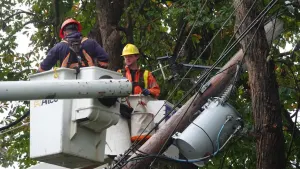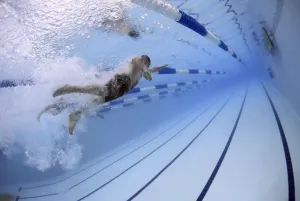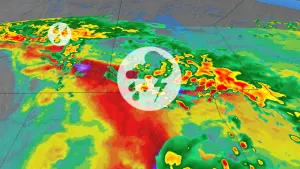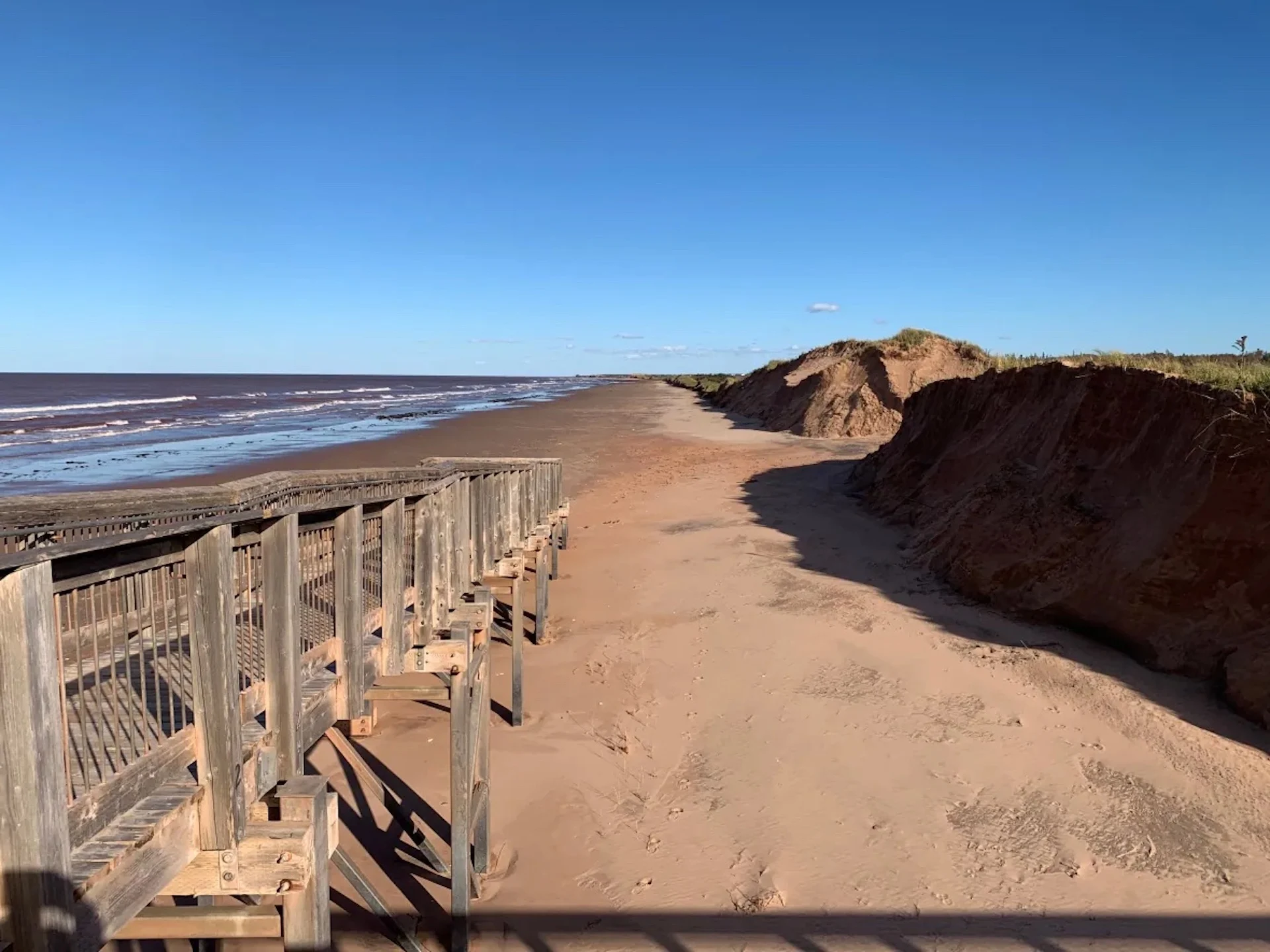
P.E.I. dunes are recovering post-Fiona, but winter could be challenging
Post-tropical storm Fiona brought sudden and dramatic change to P.E.I.'s North Shore last September, but researchers are already seeing some significant recovery.
"Dunes are very dynamic," said Chris Houser, dean of science at the University of Waterloo and a professor in its Department of Earth and Environmental Sciences.
SEE ALSO: Beach lovers use Christmas trees to repair dunes damaged by major storms
"We really don't have a good understanding about dune recovery. A lot of work has been done on the actual storm impact and the amount of erosion, because it's impressive, it's in a moment. Recovery takes years."
While it was understood a year ago that recovery would be slow, some signs are emerging that it is starting already.
The waves and storm surge from Fiona carved as much as 10 metres of dune away in a single night. Where there had been slopes covered with marram grass, a sharp-edged sand cliff was left behind.

Before Fiona, the dune at Brackley Beach was well anchored with marram grass. (The Coastie Initiative)
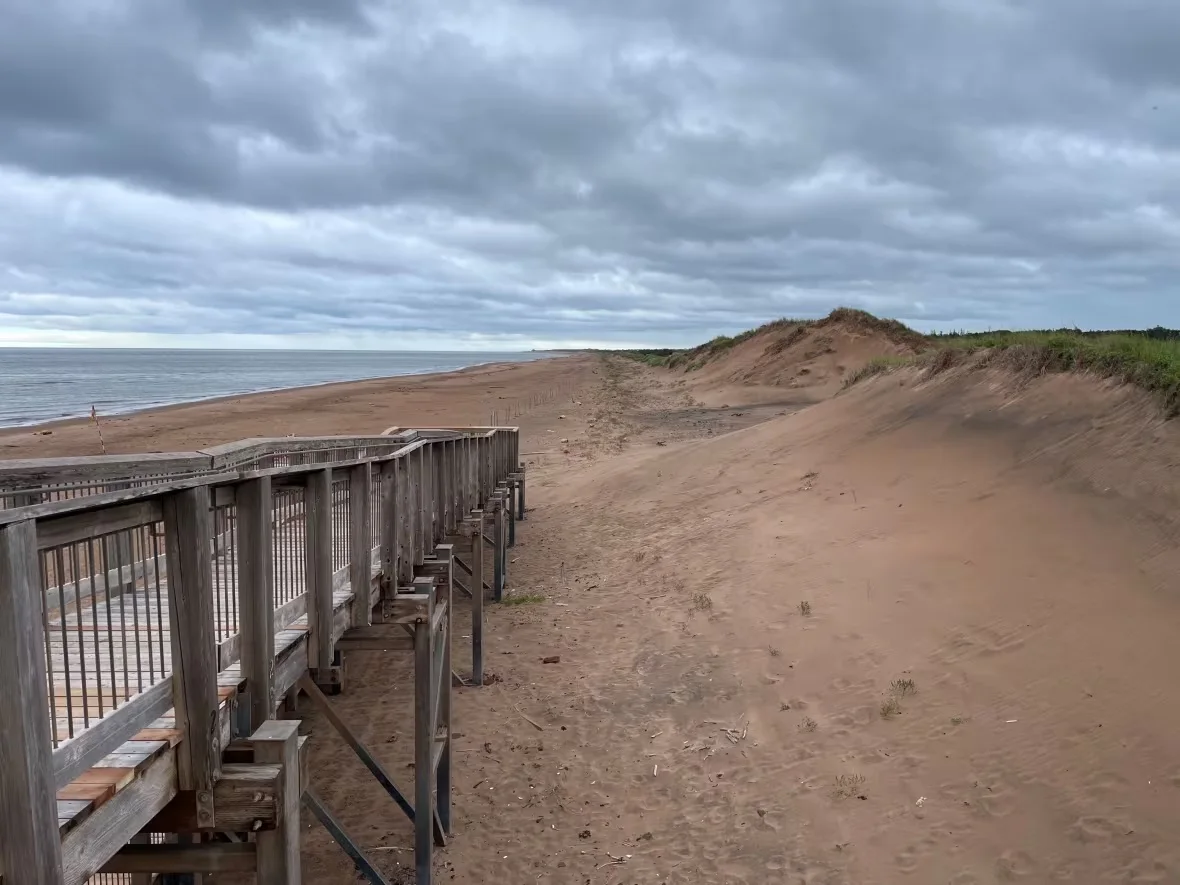
One year later, small sea rocket plants are growing in the gathering sand at Brackley Beach, holding in place the existing sand and catching more sand as it blows up the beach. (COASTIE Initiative)
But those cliffs were unstable. Their top edges began to collapse onto the beach below. At the same time, sand that had been washed away began to be pushed back on shore by the waves and tide. Once on dry land, the sand was blown back up against the cliff, contributing to the re-creation of the previous slope.
More than that was needed, however. The dunes had to have something to hold them together.
"We want the vegetation, not only to hold the sediment in place but also to catch sand that's blowing up the beach," said P.E.I. National Park ecologist Hailey Paynter.
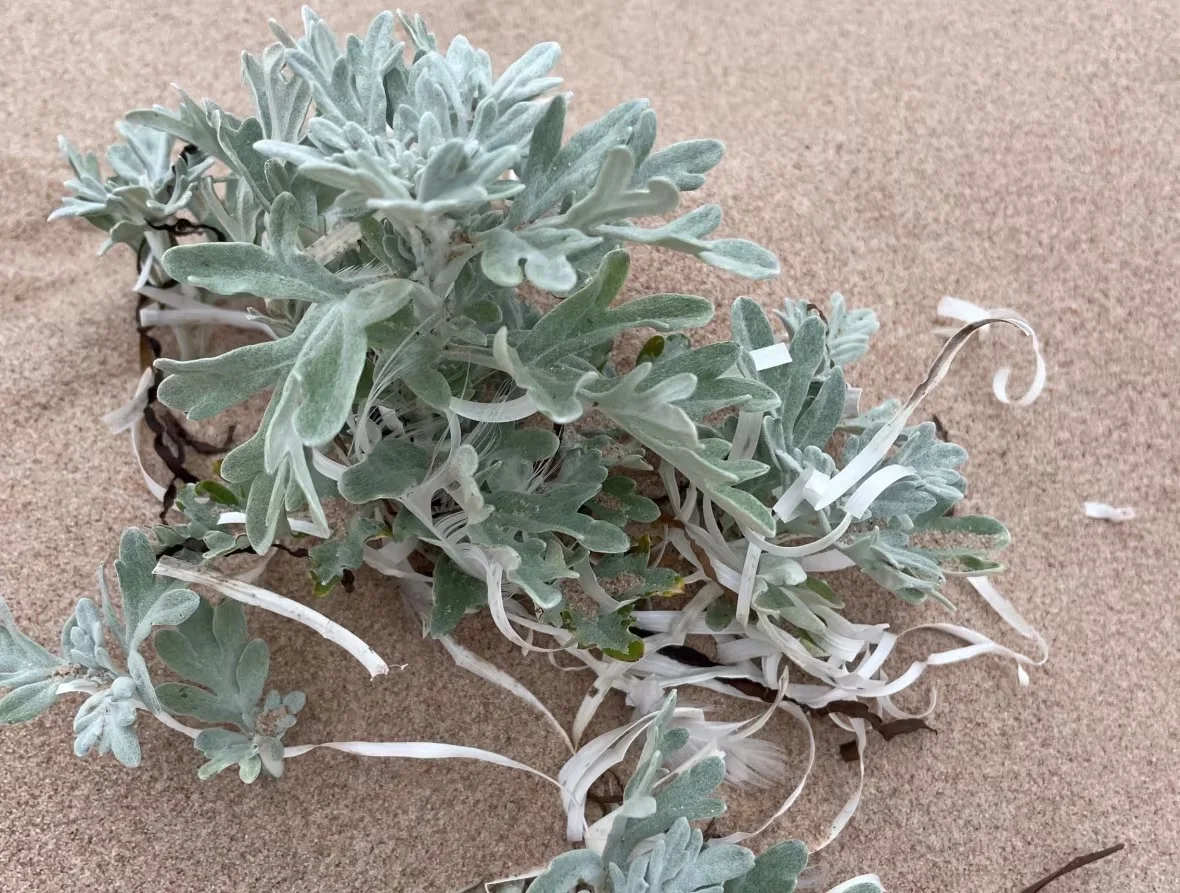
Hoary mugwort is a plant that grows right in the sand, and is an early assistant in dune building. (Kevin Yarr/CBC)
"That's where we'll really see the dunes rebuilding. First step is having some of that vegetation re-establish."
Marram grass is the best known of these ocean-side dune plants, but the ecosystem also includes beach pea, sea rocket, and blue-green artemisia, also known as hoary mugwort.
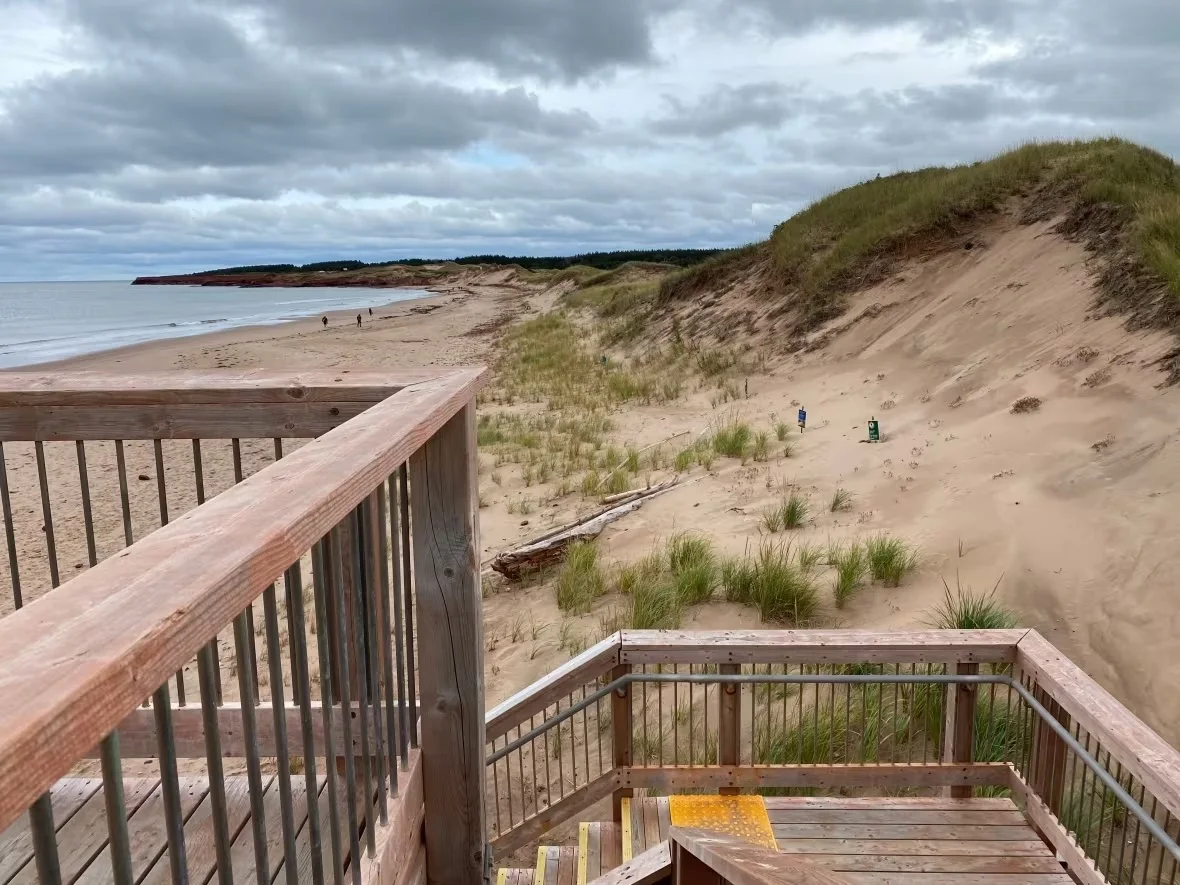
The dune at Cavendish was showing more bare sand than Brackley in advance of Fiona. (The Coastie Initiative)
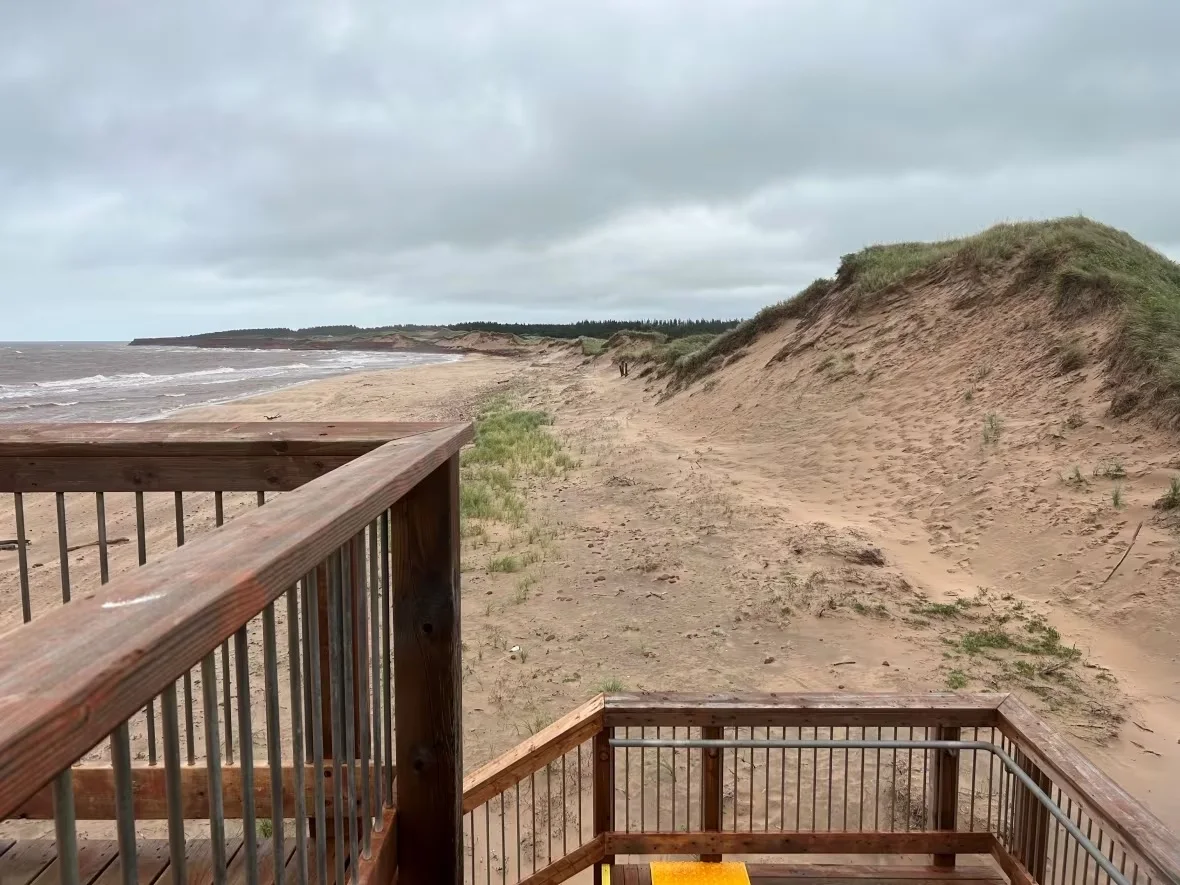
Today at Cavendish, marram grass is growing both in the lower and higher parts of the recovering area, with some pockets of sea rocket in between. (COASTIE Initiative)
A big part of the establishment of these essential plants is keeping people out of the areas where dunes are regrowing, because one ill-placed foot can disturb the growth of a young plant.
Education about the importance of staying off the dunes has always been part of P.E.I. National Park's work, but it has taken on a special emphasis on Prince Edward Island over the last year.
"Allowing these dunes the space and time to recover without people trampling on them — that's the best thing we can do," said Paynter.
Visitors have been heeding the warnings, she said.
Tropical storms not biggest concern
Other than shooing potential tramplers away from the dunes, park officials are just allowing nature to take its course. That could require three to 10 years, or even longer, depending on what happens over the next few winters.
And that's causing some concern. Houser worries that changing winter conditions could mean any progress made over the summer could be taken away by winter storms.

A satellite image, taken the day after Fiona passed over the Island, shows sand in the water from eroded dunes. (ESA/Copernicus Sentinel-2)
In even quite recent past years, ice would build up along the North Shore fairly early in the season. That ice pack prevented the surf from winter storms from breaking directly onto the beach, protecting dunes from damage. In these last few years, packed ice hasn't been piling up until February, if it does at all.
"My bigger concern is not these major storms from the tropics," Houser said of the Atlantic hurricane season, which lasts until Nov. 30. "My concern is what's going to happen this winter."
He said the Island saw that right after post-tropical storm Dorian roared through in September of 2019.
"Dorian came in and it started to recover, the dunes did, but those winter storms, without any ice, came right in and eroded the base of the dune. All that recovery was lost."
WATCH: Months after Fiona, this devastated town is still in shock
Even if the dunes escape the worst of winter storms, they are not likely to come back just as they were. While the dunes are rebuilding, they are dynamic and won't rise in the exact same places. Even those that re-establish in a similar position will move with more frequent storms and higher sea levels.
"The dunes that we know today will be very different in the future," said Houser.
And that means a management plan is needed for the whole of the North Shore, he said. Any piecemeal efforts to hold the line on erosion will simply move the impact to another area.
"We have to think about a managed retreat, and where we're going to allow some areas to retreat, and how is it going to retreat, and what does that mean for our infrastructure, our roads, our livelihoods."
Thumbnail courtesy of The Coastie Initiative via CBC.
The story was originally written by Kevin Yarr and published for CBC News. It contains files from Maggie Brown and Island Morning.






